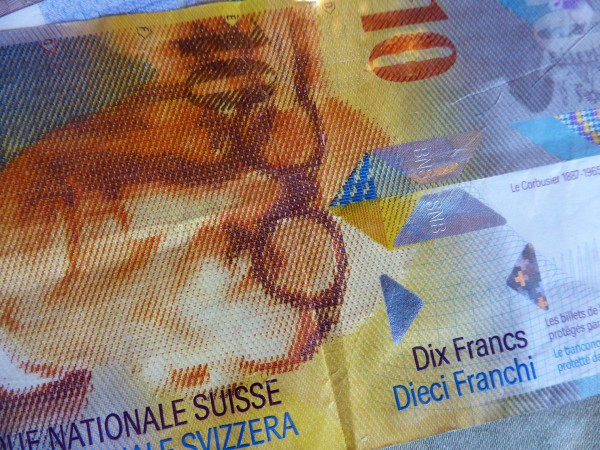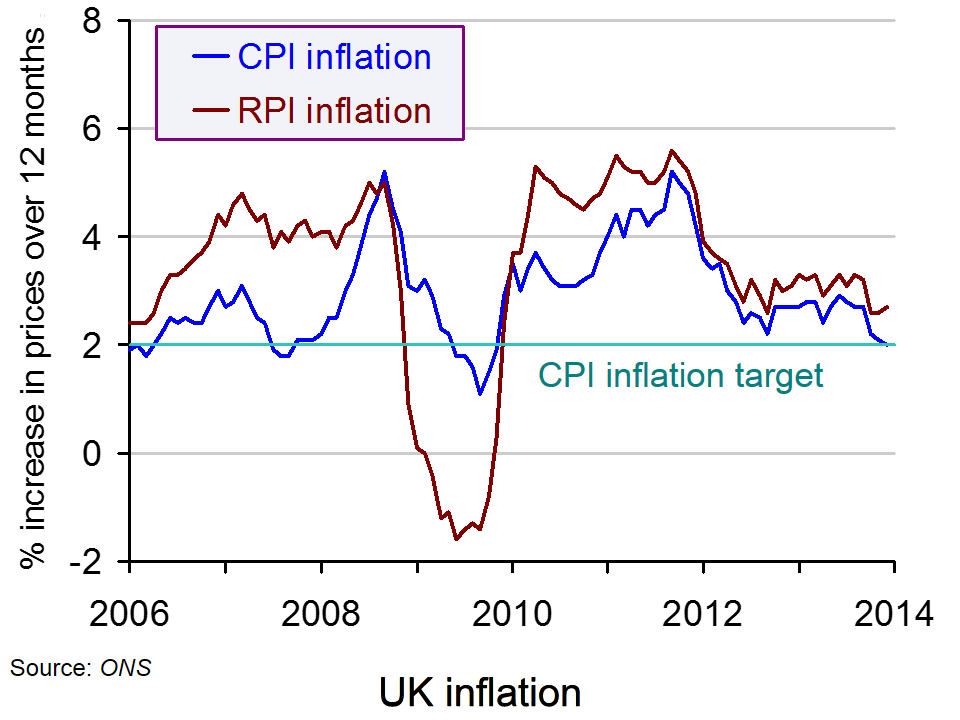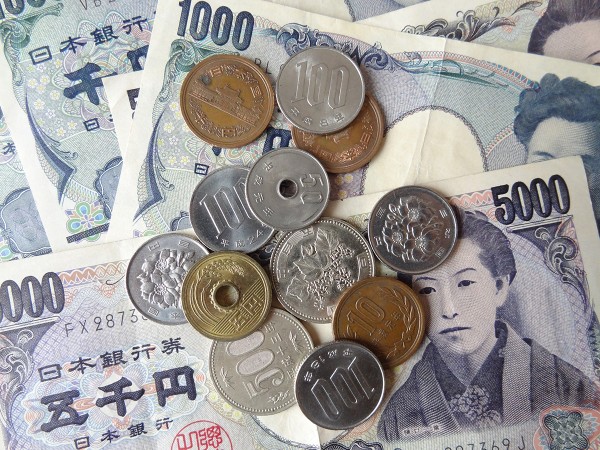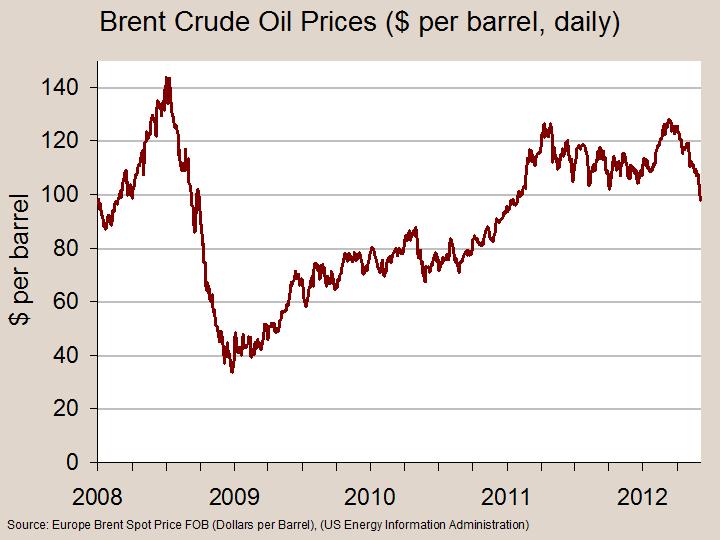 We have had a minimum wage in the UK for well over a decade and one its key purposes was to boost the pay of the lowest paid workers and in doing so reduce the inequality gap. Rising inequality has been a concern for many countries across the world and not even the nations with the most comprehensive welfare states have been immune.
We have had a minimum wage in the UK for well over a decade and one its key purposes was to boost the pay of the lowest paid workers and in doing so reduce the inequality gap. Rising inequality has been a concern for many countries across the world and not even the nations with the most comprehensive welfare states have been immune.
Switzerland, known for its banking sector, has been very democratic in its approach to pay, holding three referenda in recent years to give the Swiss public the chance to decide on pay. Imposing restrictions on the bonuses available to the bosses of the largest companies was backed in the first referendum, but in this latest vote, the world’s highest minimum wage has been rejected. The proposed wage is the equivalent of £15 per hour and it is the hourly wage which proponents argue is the wage needed to ensure workers can afford to ‘live a decent life’. However, prices in Switzerland are considerably higher than those in the UK and this wage translates to around £8.33 per hour in purchasing power parity terms, according to the OECD. In the UK, much debate has surrounded the question of a living wage and the impact that a significant increase in the NMW would have on firms. The concern in Switzerland has been of a similar nature.
needed to ensure workers can afford to ‘live a decent life’. However, prices in Switzerland are considerably higher than those in the UK and this wage translates to around £8.33 per hour in purchasing power parity terms, according to the OECD. In the UK, much debate has surrounded the question of a living wage and the impact that a significant increase in the NMW would have on firms. The concern in Switzerland has been of a similar nature.
With a higher wage, costs of production will inevitably rise and this is likely to lead to firms taking on fewer workers and perhaps moving towards a different mix of factors of production. With less workers being employed, unemployment would be likely to increase and it may be that the higher costs of production are passed onto consumers in the form of a higher price. One problem is that as prices rise, the real wage falls. Therefore, while advocates of this high minimum wage suggest that it would help to reduce the gap between rich and poor, the critics suggest that it may lead to higher unemployment and would actually harm the lowest paid workers. It appears that the Swiss population agreed with the critics, when 76% voted against the proposal. Cristina Gaggini, who is the Director of the Geneva Office of the Swiss Business Association said:
I think [it would have been] an own goal, for workers as well as for small companies in Switzerland … Studies show that a minimum wage can lead to much more unemployment and poverty than it helps people … And for very small companies it would be very problematic to afford such a high salary.

The proposal was made by Swiss Unions, given the high cost of living in Switzerland’s suggest cities. It was rejected by the Swiss Business Federation and government and this was then echoed by the overwhelming majority in the referendum. Switzerland has been found to be the most expensive place to live in the world and the wages paid are insufficient to provide a decent life, with many claiming benefits to support their earnings. The debate over the minimum wage and the living wage will continue in countries across the world, but for now the Swiss people have had their say. The following articles consider this issue.
Switzerland rejects world’s highest minimum wage BBC News (18/5/14)
Swiss voters reject plan to establish world’s highest minimum wage The Guardian, Julia Kollewe (18/5/14)
Swiss voters reject setting world’s highest minimum wage Wall Street Journal, Neil Maclucas (18/5/14)
Swiss voters reject world’s highest minimum wage, block fighter jets Reuters, Caroline Copley (18/5/14)
Switzerland votes on world’s highest minimum wage at £15 per hour Independent, Loulla-Mae Eleftheriou-Smith (18/5/14)
Swiss reject highest minimum wage in world Financial Times, James Shotter (18/5/14)
Swiss reject world’s highest minimum wage, jet purchase Bloomberg, Catherine Bosley (18/5/14)
Questions
- Using a demand and supply diagram, illustrate the impact of a national minimum wage being imposed.
- Using the diagram above, explain the impact on unemployment and evaluate the factors that determine the amount of unemployment created.
- Given what you know about the proposed Swiss minimum wage, how much of an impact on unemployment do you think there would be?
- Draw a diagram to show the effect on a firm’s costs of production of the national minimum wage. Explain how such costs may affect the prices consumers pay for goods and services.
- How is it possible that a higher minimum wage could actually lead to more inequality within a country?
- Is there a chance that a minimum wage could lead to inflation? What type would it be?
 A recession is typically characterised by high unemployment, low or negative growth and low inflation, due to a lack of aggregate demand. However, since 2009, inflation levels in the UK have only added to the pressures facing the government and the Bank of England. Not only had there been a problem of lack of demand, but the inflation target was no longer being met.
A recession is typically characterised by high unemployment, low or negative growth and low inflation, due to a lack of aggregate demand. However, since 2009, inflation levels in the UK have only added to the pressures facing the government and the Bank of England. Not only had there been a problem of lack of demand, but the inflation target was no longer being met.
Inflation had increased to above 5% – a figure we had not been accustomed to for many years. With interest rates at record lows with the aim of boosting aggregate demand, demand-pull inflation only added to cost-push pressures. However, data released by the ONS shows that inflation, as measured by the CPI, has now fallen back to its 2% target. Having been at 2.1% in November 2013, the figure for December 2013 fell by 0.1 percentage points.
 The data for December include some of the energy price rises from the big six, but do not include the full extent of price decreases and discounting initiated by retailers in the lead up to Christmas. The key factors that have helped to keep prices down include some of the discounting throughout December and falling food prices, in particular bananas, grapes and meat.
The data for December include some of the energy price rises from the big six, but do not include the full extent of price decreases and discounting initiated by retailers in the lead up to Christmas. The key factors that have helped to keep prices down include some of the discounting throughout December and falling food prices, in particular bananas, grapes and meat.
With inflation back on target, pressures have been removed from the Bank of England to push up interest rates. Mark Carney has said that interest rates will remain at 0.5% until unemployment falls to 7%.  With unemployment fast approaching this target, there has been speculation that interest rates would rise, but with inflation falling back on target, these pressures have been reduced. (Click here for a PowerPoint of the chart.) Referring to this, Jeremy Cook, the chief economist at World First said:
With unemployment fast approaching this target, there has been speculation that interest rates would rise, but with inflation falling back on target, these pressures have been reduced. (Click here for a PowerPoint of the chart.) Referring to this, Jeremy Cook, the chief economist at World First said:
The lack of inflation will help stay their hand especially if the pace of job creation seen in the second half of last year also shows.
These thoughts were echoed by Rob Wood, the chief UK economist at Berenberg Bank:
Inflation is the BoE’s ‘get out of jail free’ card for this year … The lack of inflation pressure gives them room to delay a first hike until next year.
Many economists now believe that the CPI rate of inflation is likely to remain at or below the target, in particular if productivity growth improves. This belief is further enhanced by the fact that tax rates are stable, the pound is relatively strong and the previous upward pressure on commodity prices from China is now declining. Some economists believe that CPI inflation could fall to 1.5% this year and the Treasury has said that it is ‘another sign that the Government’s long-term economic plan is working’. The following articles consider this latest macroeconomic data.
UK inflation falls to Bank of England’s 2pc target in December The Telegraph, Szu Ping Chan (14/1/14)
UK inflation falls to 2% target rate in December BBC News (14/1/14)
Carney’s lucky streak continues as UK inflation slows to 2% Financial Times, Claire Jones (14/1/14)
UK inflation fall gives Bank of England a lift Wall Street Journal, Richard Barley(14/1/14)
Inflation falls to Bank of England target Reuters, William Schomberg and Ana Nicolaci da Costa (14/1/14)
Inflation hits Bank of England’s target of 2% in December Independent, John Paul Ford Rojas (14/1/14)
Questions
- What is the relationship between interest rates and aggregate demand?
- Which factors have led to the reduction in the rate of inflation?
- Why have the latest data on inflation rates reduced the pressure on the Bank of England to increase interest rates?
- Why do stable tax rates, a strong pound and reduced pressure from China on commodity prices suggest that the CPI measures of inflation is likely to remain at similarly low levels?
- Why has the RPI increased while the CPI has fallen?
 Japan has suffered from deflation on and off for more than 20 years. A problem with falling prices is that they discourage spending as people wait for prices to fall further. One of the three elements of the Japanese government’s macroeconomic policy (see Japan’s three arrows) has been expansionary monetary policy, including aggressive quantitative easing. A key aim of this is to achieve an inflation target of 2% and, hopefully, propel the economy out of its deflationary trap.
Japan has suffered from deflation on and off for more than 20 years. A problem with falling prices is that they discourage spending as people wait for prices to fall further. One of the three elements of the Japanese government’s macroeconomic policy (see Japan’s three arrows) has been expansionary monetary policy, including aggressive quantitative easing. A key aim of this is to achieve an inflation target of 2% and, hopefully, propel the economy out of its deflationary trap.
The latest news, therefore, from Japan would seem to be good: consumer prices rose 0.4% in June – the first rise for more than a year. But while some analysts see the rise in prices to be partly the result of a recovery in demand (i.e. demand-pull inflation), others claim that the inflation is largely of the cost-push variety as the weaker yen has increased the price of imported fuel and food.
 If Japanese recovery is to be sustained and broadly based, a growth in real wages should be a core component. As it is, real wages are not growing. This could seriously constrain the recovery. For real wages to grow, employers need to be convinced that economic recovery will be sustained and that it would be profitable to take on more labour.
If Japanese recovery is to be sustained and broadly based, a growth in real wages should be a core component. As it is, real wages are not growing. This could seriously constrain the recovery. For real wages to grow, employers need to be convinced that economic recovery will be sustained and that it would be profitable to take on more labour.
The success of the expansionary policy, therefore, depends in large part on its effect on expectations. Do people believe that prices will continue to rise? Do employers believe that the economy will continue to expand? And do people believe that their real wages will rise?
Articles
Japan prices turn higher, but BOJ’s goal remains tall order Reuters, Tetsushi Kajimoto and Leika Kihara (26/7/13)
How Japan Could Go from Deflation to Hyperinflation in a Heartbeat The Wall Street Journal, Michael J. Casey (24/7/13)
Japan Prices Rise Most Since ’08 in Boost for Abe Bloomberg, Toru Fujioka & Andy Sharp (26/7/13)
Japan central bank finds the pessimists come from within Reuters, Leika Kihara (26/7/13)
Japan’s Fiscal Crossroads: Will Abenomics Mean Tougher Changes? The Daily Beast, Daniel Gross (26/7/13)
Japan Economist Makes Rare Call to Tackle Debt The Wall Street Journal, Kosaku Narioka (25/7/13)
Japanese Consumer Prices Rise In Sign Of Some Success In Abe Economic Policy International Business Times, Nat Rudarakanchana (26/7/13)
Data
Bank of Japan Statistics Bank of Japan
Statistics Statistics Bureau of Japan
International sites for data Economics Network
Questions
- Distinguish between cost-push and demand-pull inflation? Do higher prices resulting from a depreciation of the currency always imply that the resulting inflation is of the cost-push variety?
- In the Japanese context, is inflation wholly desirable or are there any undesirable consequences?
- Consider whether a two-year time frame is realistic for the the Bank of Japan to achieve its 2% inflation target.
- What is meant by the output gap? Using sources such as the European Commission’s European Economy, AMECO database and the OECD’s Economic Outlook: Statistical Annex Tables (see sites 6 and 7 in the Economics Network’s links to Economic Data freely available online) trace the Japanese output gap over the past 10 years and comment on your findings.
- What supply-side constraints are likely to limit the rate and extent of recovery in Japan? What is the Japanese government doing about this (see the third arrow of Japan’s three arrows)?
 With droughts and poor harvests in both North America and in Russia and the Ukraine, there are worries that food prices are likely to see sharp rises in the coming months. This is clearly bad news for consumers, especially the poor for whom food accounts for a large proportion of expenditure.
With droughts and poor harvests in both North America and in Russia and the Ukraine, there are worries that food prices are likely to see sharp rises in the coming months. This is clearly bad news for consumers, especially the poor for whom food accounts for a large proportion of expenditure.
But it’s also bad news more generally, as higher food prices are likely to have a dampening effect on the global economy, struggling to recover from five years of low or negative growth. And it’s not just food prices. Oil prices are rising again. Since mid June, they have risen by nearly 25%. This too is likely to have a dampening effect.
Another contributing factor to rising food prices is a response, in part, to rising oil prices. This is the diversion of land from growing food to growing crops for biofuels.

G20 countries held a conference call on 28 August to discuss food prices. Although representatives decided against an emergency meeting, they agreed to reassess the situation in a few weeks when the size of the US harvest would be clearer. If the situation proved as bad as feared, then the G20 would call an emergency meeting of the Rapid Response Forum, to consider what could be done.
But is the sole cause of rising food prices a lack of production? Are there other problems on the supply side, such as poor distribution systems and waste? And what about the role of demand? How is this contributing to long-term increases in food prices? The articles consider these various factors and what can be done to dampen food prices.
Articles
G20 points to ‘worrying’ food prices Financial Times, Javier Blas (28/8/12)
US food prices to surge on drought Gulf News(30/8/12)
Best to get used to high food and energy prices – they’re here to stay The Telegraph, Jeremy Warner (29/8/12)
Feeling a drought The Economist (14/8/12)
Q&A: World food and fuel prices BBC News (14/8/12)
 G20 considers global meeting as food prices rise BBC News (28/8/12)
G20 considers global meeting as food prices rise BBC News (28/8/12)
 Biofuels and Food Prices (direct link) BBC ‘In the Balance’ programme (25/8/12)
Biofuels and Food Prices (direct link) BBC ‘In the Balance’ programme (25/8/12)
U.N. body urges G20 action on food prices, waste Reuters, Patrick Lannin (27/8/12)
Ethanol industry hits back over food price claims EurActiv (28/8/12)
The era of cheap food may be over Guardian, Larry Elliott (2/9/12)
Data
Food Price Index Index Mundi
Questions
- Why have food prices been rising in recent weeks?
- Use a demand and supply diagram to demonstrate what has been happening to food prices.
- What determines the price elasticity of demand for wheat? What might this elasticity vary over time?
- What is the role of speculation in determining food prices?
- Illustrate on an aggregate demand and supply diagram the effect of a commodity price shock. What is likely to be the policy response from central banks?
- What determines the price elasticity of supply of food in (a) the short term and (b) the long term?
- What determines the cross price elasticity of supply of food to the price of oil? Is the cross price elasticity of supply positive or negative?
- What can governments do to reduce food prices, or at least reduce food price inflation?
- What benefits may come from higher food and fuel prices over the longer term?
 Oil prices have been falling in recent months. By early June they had reached a 17-month low. The benchmark US crude price (the West Texas Intermediate price) fell to $83.2 at the beginning of the month, and Brent Crude (the North Sea reference price for refining into petrol) fell to $97.7 (see chart). (For a PowerPoint of the chart below, click here.)
Oil prices have been falling in recent months. By early June they had reached a 17-month low. The benchmark US crude price (the West Texas Intermediate price) fell to $83.2 at the beginning of the month, and Brent Crude (the North Sea reference price for refining into petrol) fell to $97.7 (see chart). (For a PowerPoint of the chart below, click here.)
At the same time various commodity prices have also been falling. The IMF all commodities price index has fallen by 7.2% over the past 12 months and by 6.2% in May alone. Some commodities have fallen much faster. In the 12 months to May 2012, natural gas fell by 44%, wheat by 25%, lamb by 37%, Arabica coffee by 36%, coconut oil by 45%, cotton by 47%, iron ore by 23% and tin by 29%.
Although part of the reason for the fall in the price of some commodities is increased supply, the main reason is weak world demand. And with continuing problems in the eurozone and a slowdown in China and the USA, commodity price weakness is likely to continue.
 So is this good news? To the extent that commodity prices feed through into consumer prices and impact on the rate of inflation, then this is good news. As inflation falls, so central banks will be encouraged to make further cuts in interest rates (in the cases where they are not already at a minimum). For example, the Reserve Bank of Australia cut its cash rate last week from 3.75% to 3.5%. This follows on from a cut from 4.25% on 1 May. In cases where there is no further scope for interest rate cuts (e.g. the US Federal Reserve Bank, whose interest rate is between 0% and 0.25%), then the fall in inflation may encourage a further round of quantitative easing.
So is this good news? To the extent that commodity prices feed through into consumer prices and impact on the rate of inflation, then this is good news. As inflation falls, so central banks will be encouraged to make further cuts in interest rates (in the cases where they are not already at a minimum). For example, the Reserve Bank of Australia cut its cash rate last week from 3.75% to 3.5%. This follows on from a cut from 4.25% on 1 May. In cases where there is no further scope for interest rate cuts (e.g. the US Federal Reserve Bank, whose interest rate is between 0% and 0.25%), then the fall in inflation may encourage a further round of quantitative easing.
But falling commodity prices are also a reflection of bad news, namely the low economic growth of the world economy and fears of turmoil from a possible Greek exit from the euro.
Update
A day after this was written (9/6/12), a deal was agreed between eurozone ministers to provide support of up to €100 billion for Spanish banks. This helped to reduce pessimism about the world economy, at least temporarily. Stock markets rose and so too did oil prices, by around 1%. But if pessimism increases again, then the fall is likely to resume.
Articles
Oil prices hit a 17-month low on China slowdown fears BBC News (8/6/12)
Oil gives up gains without signs of Fed move BloombergBusinessweek, Sandy Shore (7/6/12)
Oil Heads for Longest Run of Weekly Losses in More Than 13 Years BloombergBusinessweek, (8/6/12)
Gold plunges as Bernanke gives no hint of stimulus Live5News(7/6/12)
Oil Price Tumbles Below $83 on Weak Economy Money News(8/6/12)
World food price index expected to fall for May Reuters(6/6/12)
Oil price losing streak continues Guardian, Julia Kollewe (8/6/12)
Data
Spot fuel prices US Energy Information Administration
Commodity Prices Index Mundi
Crude Oil Price Index Index Mundi
Questions
- Why have crude oil prices fallen to their lowest level for 17 months?
- How can the concepts of income elasticity of demand, price elasticity of supply and price elasticity of demand help to explain the magnitude of the fall in crude oil prices?
- Would a fall in inflation linked to a fall in commodity prices be a fall in cost-push or demand-pull inflation? Explain.
- What are the macroeconomic implications of the fall in crude oil prices?
- What factors are likely to have significant impact on crude oil prices in the coming months
- Why is it difficult to predict crude oil prices over the coming months?
 We have had a minimum wage in the UK for well over a decade and one its key purposes was to boost the pay of the lowest paid workers and in doing so reduce the inequality gap. Rising inequality has been a concern for many countries across the world and not even the nations with the most comprehensive welfare states have been immune.
We have had a minimum wage in the UK for well over a decade and one its key purposes was to boost the pay of the lowest paid workers and in doing so reduce the inequality gap. Rising inequality has been a concern for many countries across the world and not even the nations with the most comprehensive welfare states have been immune. needed to ensure workers can afford to ‘live a decent life’. However, prices in Switzerland are considerably higher than those in the UK and this wage translates to around £8.33 per hour in purchasing power parity terms, according to the OECD. In the UK, much debate has surrounded the question of a living wage and the impact that a significant increase in the NMW would have on firms. The concern in Switzerland has been of a similar nature.
needed to ensure workers can afford to ‘live a decent life’. However, prices in Switzerland are considerably higher than those in the UK and this wage translates to around £8.33 per hour in purchasing power parity terms, according to the OECD. In the UK, much debate has surrounded the question of a living wage and the impact that a significant increase in the NMW would have on firms. The concern in Switzerland has been of a similar nature.









